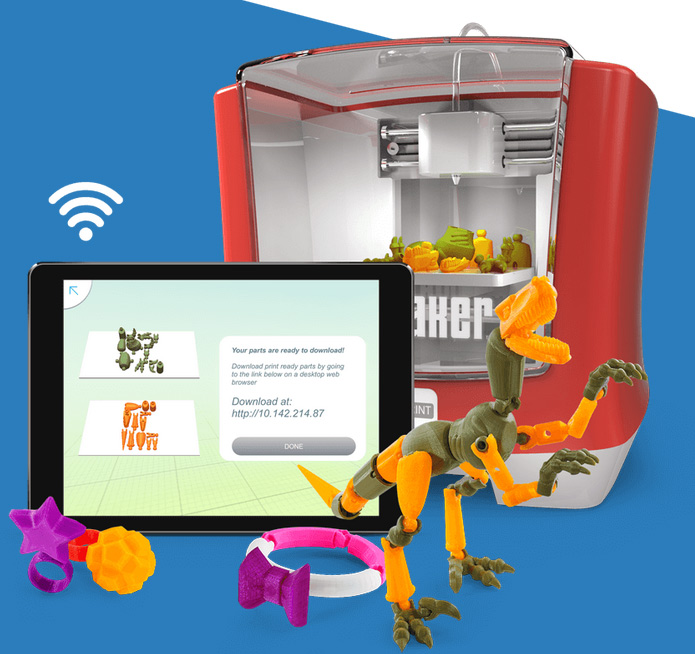Those who have a few years on his shoulders remind some mythical factory of Monsters, small oven that was used to 'cook' mostricciattoli and various insects from multicolored liquids through special molds. 'Creepy Crawlers' was the original US version of the toy, a Mattel brand, also known by the nickname of ThingMaker. This name is the one chosen by Mattel to present, more than fifty years since the first version of Creepy Crawlers, the modern version of the toy that could only be founded on 3D printing technologies.
The new ThingMaker is a FDM 3D printer filament, but the project is also based, and above all, on a special app for iOS and Android, designed to bring easily the smallest 3D printing. The announcement was in the air for some time, actually for about a year, date of the announcement of the partnership between Mattel and Autodesk to develop toys based on 3D printing technologies. The app greatly simplifies the development of 3D design, as it does not oblige to draw models from scratch, but it allows you to create them by assembling pre-drawn parts, with a simple drag and drop action. It is the identical approach used by Tinkerplay, app made just by Autodesk, last March.
Templates can be created in different colors, of course, then under construction augmentation you can print only one color at a time, since the printer a monoestrusore.
The small printer is developed to easily find space on a desk or on a table and has a mechanism that locks the door during the printing stages, in order to avoid possible accidents: for the same reason the heated floor is put out of the reach of hands of children when not in use. It is indicated for use from 13 years onwards, but the toys that will be created in PLA with it should be safe from three years onwards.
Of course for those wishing to engage with the press less than 13 years will need the support of a parent, as the phase of creating toys through app is so simple as to be within the reach of younger children of that age.
The new ThingMaker is a FDM 3D printer filament, but the project is also based, and above all, on a special app for iOS and Android, designed to bring easily the smallest 3D printing. The announcement was in the air for some time, actually for about a year, date of the announcement of the partnership between Mattel and Autodesk to develop toys based on 3D printing technologies. The app greatly simplifies the development of 3D design, as it does not oblige to draw models from scratch, but it allows you to create them by assembling pre-drawn parts, with a simple drag and drop action. It is the identical approach used by Tinkerplay, app made just by Autodesk, last March.
The small printer is developed to easily find space on a desk or on a table and has a mechanism that locks the door during the printing stages, in order to avoid possible accidents: for the same reason the heated floor is put out of the reach of hands of children when not in use. It is indicated for use from 13 years onwards, but the toys that will be created in PLA with it should be safe from three years onwards.
Of course for those wishing to engage with the press less than 13 years will need the support of a parent, as the phase of creating toys through app is so simple as to be within the reach of younger children of that age.
The models created can be saved in the cloud (on an http address created from time to time on a special space, or save to Dropbox or Google Drive) and output to the printer. The printer will be marketed starting in the fall, while the app ThingMaker Design is already available for download and can be used to create projects to be printed in case of other printers, for those who had already available. The price of the printer will be very aggressive in the US is set at $ 299.99.

Comments
Post a Comment